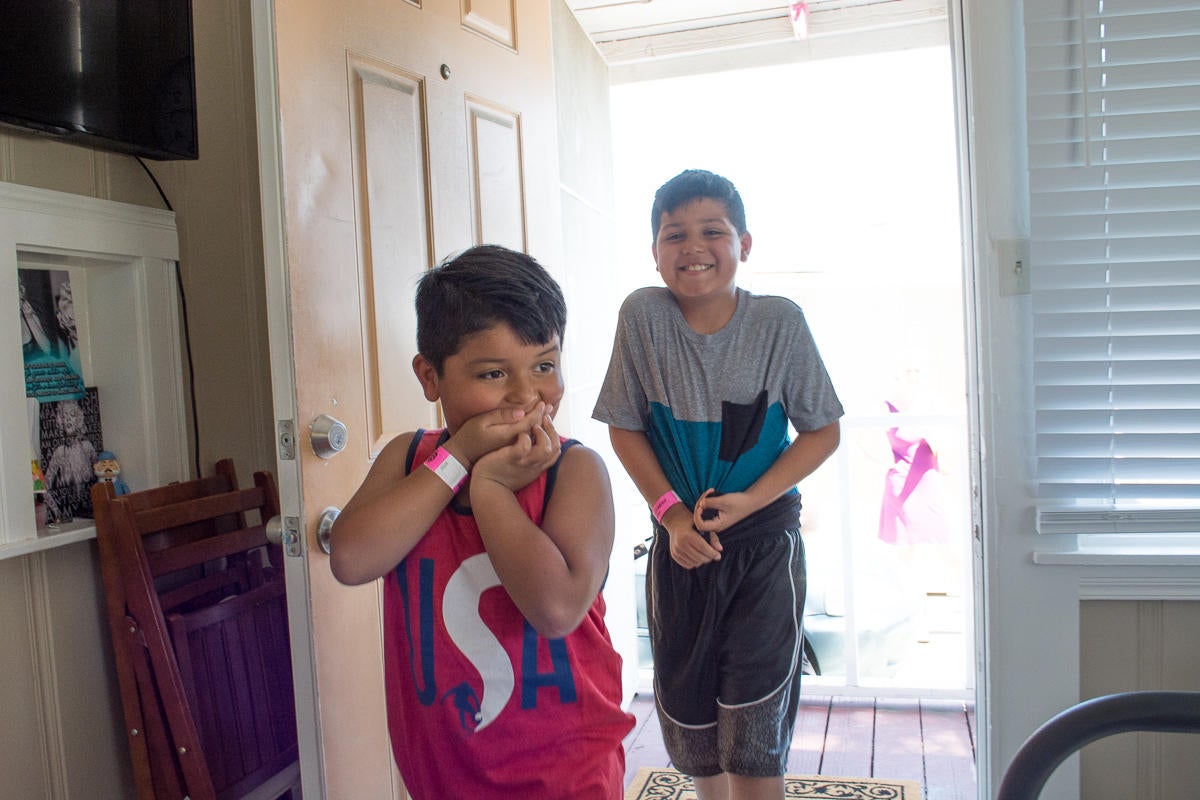For all the beauty it delivers, it’s no secret that the interior design industry walks with a wasteful shadow. Damaged orders, mismeasured products—even furniture that’s been only lightly used—piles up quickly at the landfill. After 20 years working in the home industry, San Francisco–based designer Carolyn Rebuffel was wrestling with this reality, wondering how she might transform her concerns into a proactive solution.

The answer presented itself when she saw how her passions could intertwine. A longtime philanthropist, Rebuffel has focused her volunteer work within the Northern California foster care system. There, she discovered the overwhelming statistics of homelessness among those that age out (about 50 percent of newly emancipated individuals in California spend their first year without a home) and saw a clear demand for home in these young adults and families. But it was last year, after Rebuffel joined the Good Future Design Alliance, a local organization that seeks to change the course of the furniture industry’s waste production, that her plan began to take shape. “As a designer, there’s so much waste in this business, it’s crazy,” she tells Business of Home. “So putting those two things together just made a lot of sense.”
On October 1, Rebuffel launched Make It Home, a nonprofit organization that places donated home goods in the residences of families and individuals that are transitioning out of homelessness. The organization is not an entirely new concept; Rebuffel was inspired by similar nonprofits across the U.S., like Detroit-area Humble Design and Grateful Gatherings in the Bay Area. “All these people are supporting individuals transitioning either out of crisis, out of homelessness or emancipating to a permanent residence and furnishing it for them,” she explains. By modeling Make It Home after these nonprofits, the designer launched a version within her own community, delivering the benefits of design to the homes of those who might not otherwise have access.
Since launching, Rebuffel has installed furnishings in seven homes, with five to six more projects on deck before the year’s end. Largely working alone or with a small support staff of volunteers, she outfits homes with basic pieces of furniture, from beds and tables to lamps and dining sets—all for an estimated $1,500 per residence, half of which is earmarked for moving expenses. “It’s one thing to be living on an air mattress out of a garbage bag,” she says. “But to have a dresser to put your stuff away, and dishes—that’s the kind of stuff that is going to prevent these people from going back to homelessness.”
There’s evidence to prove it. According to data from the U.S. Department of Housing and Urban Development, up to 50 percent of families return to homelessness within a year of securing housing—but according to data from the Pontiac, Michigan–based nonprofit Humble Design, less than 1 percent of the families they’ve worked with return to homelessness after receiving donated design services. In other words, surrounding people in need with the elements of home is more than a heartwarming idea; there is evidence that it can make a significant and tangible impact on their long-term quality of life.

When Rebuffel spoke with Business of Home, she had just completed her first apartment for a newly emancipated foster child. She had worked with one other volunteer throughout the day, packing up the furnishings for the apartment before movers arrived to transport the pieces. She then worked alongside the new resident, putting art on the walls, making the bed and unpacking pots and pans in the kitchen area. “He was so happy—it couldn’t have gone better,” she says.
To source furniture, Rebuffel has established a partnership with the Bay Area Furniture Bank in Santa Clara, a donation center that collects pieces from homes, hotels and universities and stores them in a Google-donated warehouse space. The collaboration also enables contributions to be counted as tax-deductible donations through the Bay Area Furniture Bank, with the eventual goal being that furniture can be donated directly to Make It Home. Word travels fast, and as a result of her network, Rebuffel now has more furniture than she can place. But she’s working to change that.
“[Because] of COVID, there is so much more need—it’s dire now,” she says. “It’s time to give back.” And despite having her most profitable year as a designer, she is taking a full year off from her design practice to direct her full attention to growing Make It Home. “Seventy kids just in San Francisco are going to need help in June—that’s why I’ve got to get warehouse space, that’s why I’ve got to get the word out and get things organized,” says Rebuffel. “Being at home, when stuff’s a mess, it takes you down a notch. I’m not doing an HGTV reveal, but when stuff’s really pretty and put away, it’s easy to reach the next level—it’s the same way for these people who have been homeless, or lost everything in a fire or ran from domestic abuse. And I know that I can make an impact.”
Homepage image: One of Make It Home’s completed projects | Courtesy of Grateful Gatherings





























